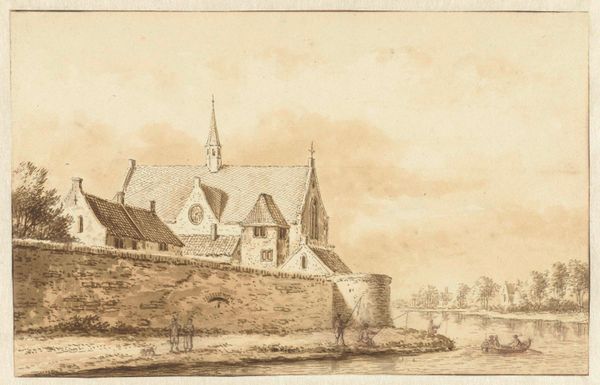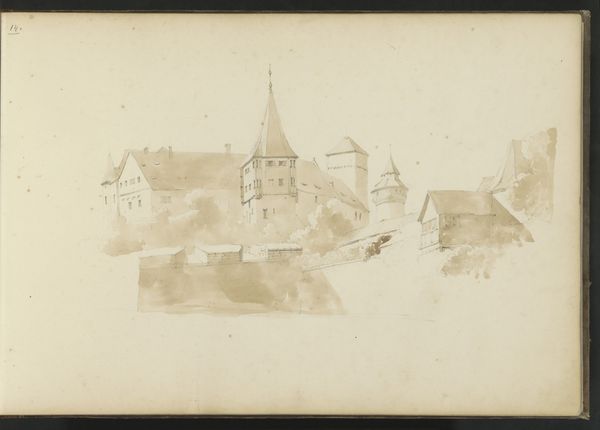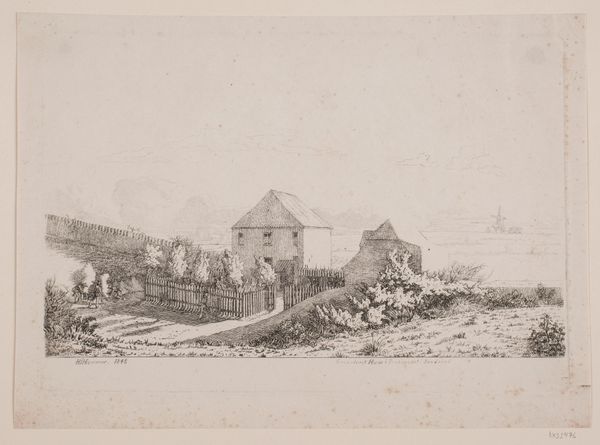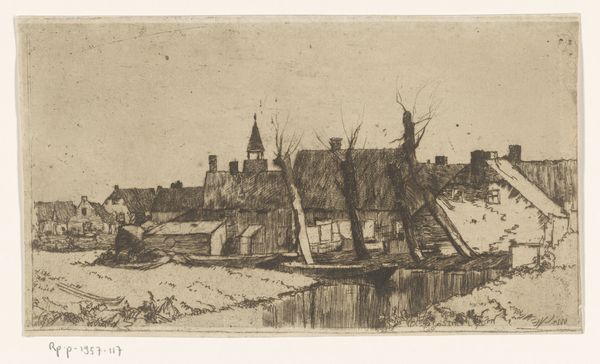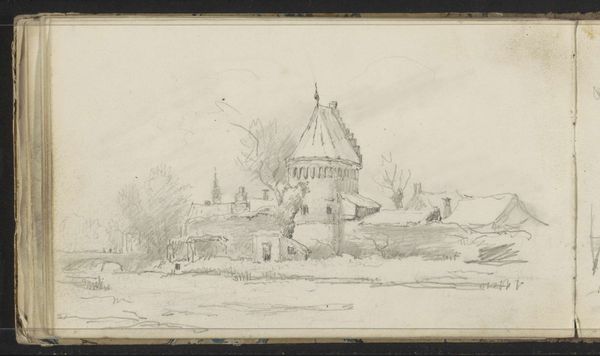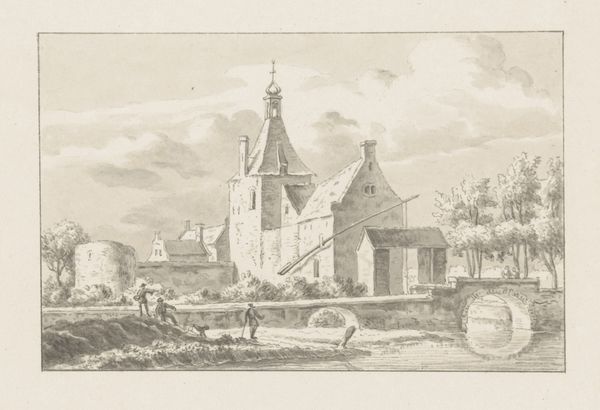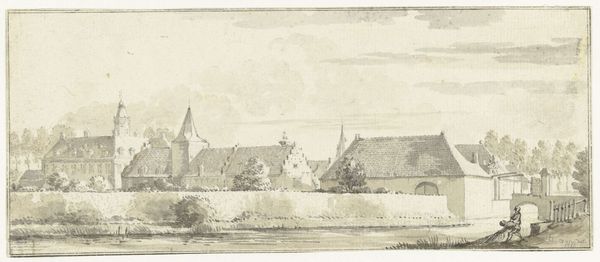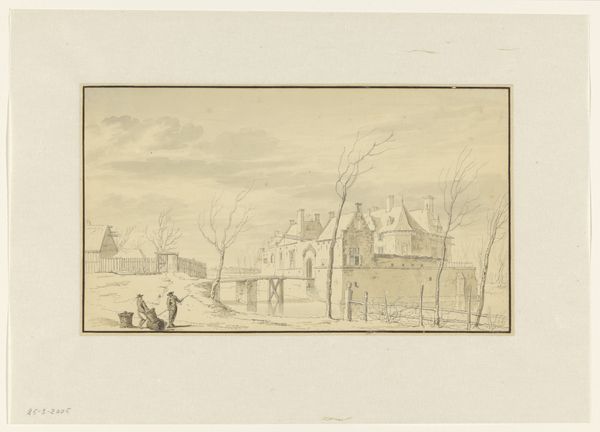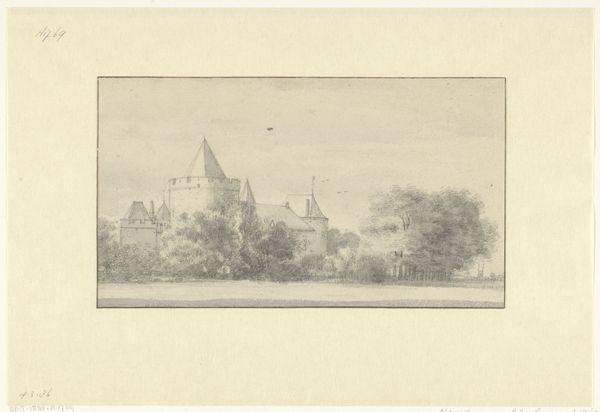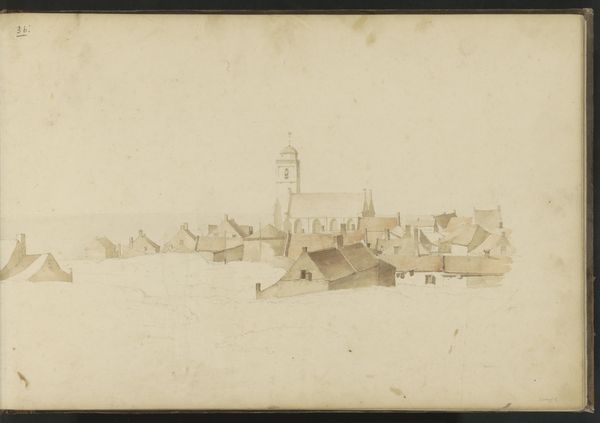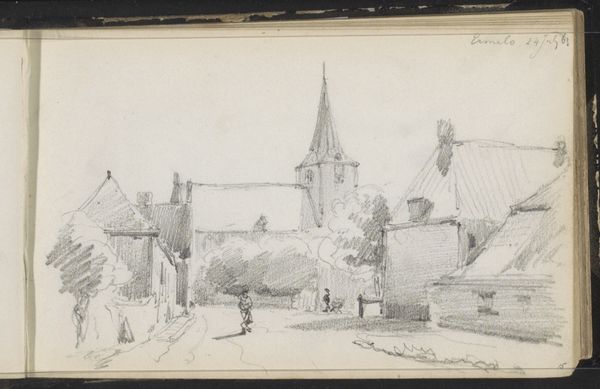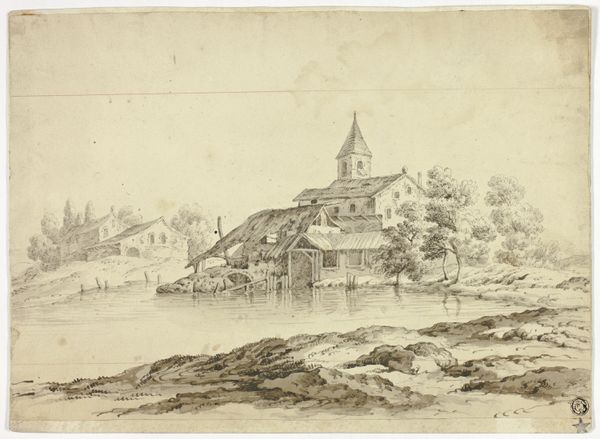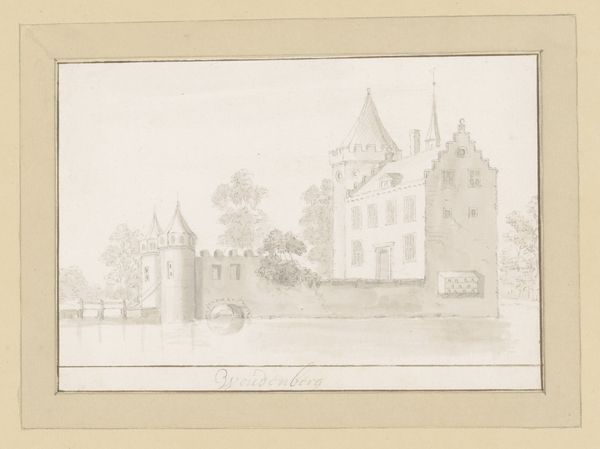
The village of Nederhorst and the castle from the south c. 1646 - 1647
0:00
0:00
drawing, pencil
#
drawing
#
dutch-golden-age
#
landscape
#
pencil
Dimensions: height 153 mm, width 279 mm
Copyright: Rijks Museum: Open Domain
Roelant Roghman rendered "The village of Nederhorst and the castle from the south" in pen and grey ink, a medium that lends itself well to topographical studies. Made in the Dutch Golden Age, this drawing captures the Dutch countryside, a popular subject during a time of growing national identity and pride. The detailed depiction of Nederhorst Castle, with its turrets and outbuildings, reflects the interest in country estates and the landed gentry. This interest wasn't just aesthetic; it mirrored the social structure where wealth and status were increasingly tied to land ownership. Roghman’s choice to depict the castle from a distance and include the village suggests a commentary on the relationship between the elite and the community. To understand this drawing fully, we might consult period maps, estate records, and social histories. These would help us decode the visual language Roghman employed, revealing how art serves as a mirror reflecting the values and power dynamics of its time.
Comments
rijksmuseum about 2 years ago
⋮
Roghman created a picturesque portrayal of Nederhorst, the church and castle, and a carriage making its way across the bridge right up to the gate. The drawing’s original panoramic character became clear when this sheet was reunited with the recently gifted right half. It was not unusual for art dealers to cut drawings into separate pieces. Two or three individual drawings often fetched more than a single large one.
Join the conversation
Join millions of artists and users on Artera today and experience the ultimate creative platform.
